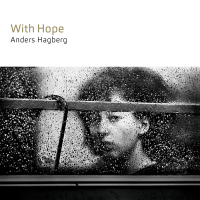By Mark Mulligan of MIDiA and the Music Industry blog
Half a century after it first after it first topped the charts, the Beatles’ Abbey Road is back at the summit of the UK charts. With the anniversary editions retailing for between $20 and $100, the impact on Universal Music’s revenue will be even more pronounced than the chart position, as we saw with the deluxe editions of the White Album (which had editions priced up to $145) helping the Beatles become the fourth-biggest UMG artist in revenue terms in 2018. The continued success of the Beatles tells us three main things:
- The band has enduring appeal in a way few bands have so long after their demise
- Universal is doing a fantastic job of managing the legacy of the Beatles with smart and effective catalogue marketing and product strategy
- Older, physical-focused music fans remain the quickest route to high-value, large-scale revenue
Streaming is not yet everything, by a long stretch
While streaming is well established, it is still a minority activity (i.e. less than half of the population streams—the rate is even lower when you factor in emerging market regions such as sub-Saharan Africa). Most of you reading this will have been streaming for many years now, so this may sound a bit crazy, but we all live in our own filter bubbles, surrounded by people with similar world views and behaviours. The reality is that we are still in a transition period where the old and the new coexist. This dual-reality paradigm underpins the Beatles’ continued success.Looking at data from MIDiA’s forthcoming artist insight platform Index, we can see that the top 15 biggest audiences ranked by overall listening is significantly different from the top 15 streaming audiences. The differences become far more pronounced as we work our way down the rankings. Mass market linear media (especially TV and radio) used to be the only way in which record labels turned artists into mainstream brands. The biggest artists of today (in fact all of the artists in both of the top 15 rankings) built their fanbases sitting on the shoulders of big, traditional media. Big media of course still plays a crucial role – as illustrated by the fact that the top five most-listened to artists have all recently been in major movies. In fact, movies are emerging as the mass medium that can still create globally relevant cultural moments in the way that radio and TV used to.
Niche is the new mainstream
Now though, newer artists are building their fanbases outside of traditional media, using digital marketing channels to laser-target specific audiences rather than the traditional carpet-bombing approach. As a consequence, when we look at the top 15 most-streamed artists based on those audiences that actually know the artist we see a totally different picture with artists like Post Malone, Martin Garrix and Bille Eilish among the top-performing. These are still-big artists; artists that have found global niches with genuine scale, but niches nonetheless. This is the era of fragmented fandom. Niche is the new mainstream.The first global pop band, perhaps
The Beatles were arguably the first big, global pop band—I say ‘arguably’ because there are many other claimants to that title, but whether they were first, or among the first, they helped create the template for artist success that shaped the modern recorded music industry. Now, as part of our cultural history they have an additional emphasis. The film ‘Yesterday’ will have introduced new audiences to the Beatles’ music, as will the hype around the return of Abbey Road. However, the majority of Beatles fans are old (59% are aged over 45) with an average age of 46. This aligns with average age of consumers that still buy CDs and that still listen to albums.This does not mean that young people are not listening to the Beatles also (and on streaming they skew younger), also even with an average age of 45 this means that a large portion of the core fanbase are not from the Beatles’ original generation.
However, it is a very different demographic from Spotify users (average age 34) and, for example, Billie Eilish fans (29). Beatles fans skew towards older consumers that are more likely to buy and listen to physical albums.
For all the chart modifications, actual album sales still have key impact
With all of the reformatting of charts to recognise streams, album sales still carry much more weight, because:
- A lot of streams are needed to be equivalent to an album (1,500 in the UK, 1,250 paid streams or 3,750 ad-supported streams in the US)
- Newer, streaming-centric artists tend to be track artists rather than album artists, and tend to have a larger share of ad-supported listeners, so it is harder for them to top album charts
The key takeaway from Abbey Road at 50 is that we still have a long, long way to go on the streaming journey. In fact, you might say it is ‘the long and winding road’.
























